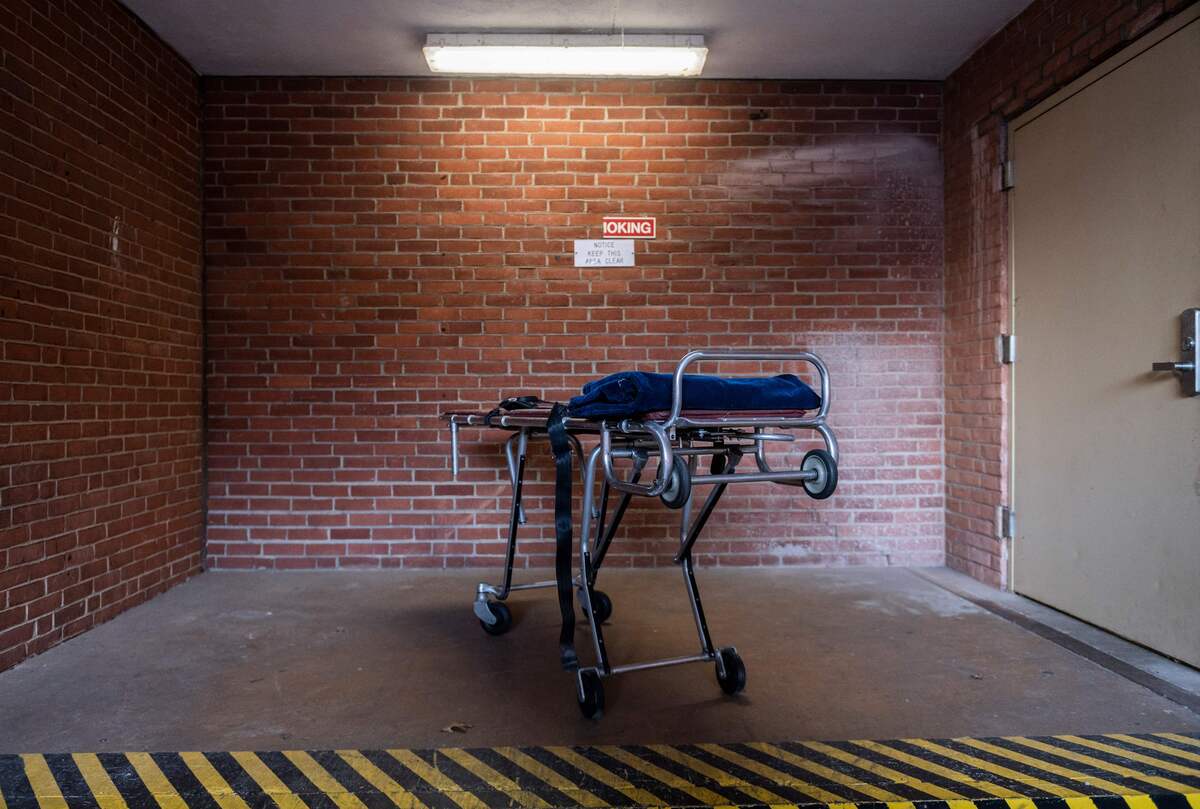An empty gurney is seen outside of a hospital’s morgue in Baltimore, Md., in 2020.
Andrew Caballero-Reynolds/AFP via Getty Images
hide caption
toggle caption
Andrew Caballero-Reynolds/AFP via Getty Images


An empty gurney is seen outside of a hospital’s morgue in Baltimore, Md., in 2020.
Andrew Caballero-Reynolds/AFP via Getty Images
It was a shocking story that made headlines across the globe this week: A woman in Ecuador named Bella Montoya was declared dead but later surprised family members gathered for her wake when she showed signs of life from her coffin.
“It gave us all a fright,” Montoya’s son, Gilberto Barbera, told The Associated Press.
Though tales of people mistakenly declared dead garner widespread attention when they do occur, the grave error is exceedingly uncommon.
“Waking up dead in your coffin is vanishingly rare,” Dr. Stephen Hughes, a senior lecturer at the Anglia Ruskin University School of Medicine, told NPR.
He estimated that there are probably only a handful of cases worldwide per year of medical professionals erroneously pronouncing a patient dead.
“But it does happen sometimes,” Hughes added.
In February, an 82-year-old woman was discovered alive at a New York funeral home after being declared dead at a nursing home hours earlier.
A similar case that occurred in Iowa in January resulted in a $10,000 fine for the Alzheimer’s care facility that sent a hospice patient to a funeral home, where workers discovered her gasping for air in a body bag.
According to Hughes, the first step in determining whether a patient is dead is trying to get them to respond. If that doesn’t work, doctors will typically look for signs that blood is pumping (such as searching for a pulse) and that the person is breathing (such as feeling their chest move). Finally, doctors may shine a light in the patient’s eye to see if their pupils dilate in response. If none of that works, they are likely dead.
But there are a number of reasons a living person could be mistaken for dead, Hughes said. Doctors who are “less than diligent” may hurriedly do a cursory examination of a patient and fail to pick up on signs of life, and poor medical education may also contribute, he said.
There could also be medical reasons for the misdiagnosis. Hughes said patients exposed to cold water may experience lower heart and breathing rates, and certain drugs such as barbiturates can also slow the body down.
“I’m looking at about three or four cases worldwide per year,” Hughes said. “It’s rare and it’s alarming, so it gets published [in the media].”
Still, he noted, these kinds of mistakes are “very, very, very rare.”
Such determinations are distinct from “brain death” when patients still have cardiac and respiratory function, often with the assistance of machines like a ventilator, but have suffered the irreversible loss of brain function.
This story originally appeared on NPR


